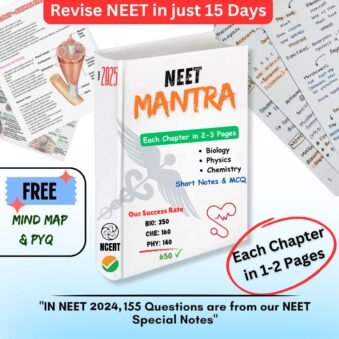p- block Elements Important Points – The p-block elements are located on right side of the periodic table, spanning groups 13 to 18. They exhibits a diverse range of chemical properties due to their valence electrons in the p orbital. Group 13 elements have +3 oxidation states, while Group 14 elements like carbon can form four covalent bonds.
Group 15 elements have multiple oxidation states, and nitrogen is vital for the biological processes. Oxygen commonly exhibits a -2 oxidation state and is crucial for respiration. Halogens in Group 17 readily accept the electrons and form -1 oxidation states, while noble gases in Group 18 have stable electronic configurations and rarely form compounds. Each group has unique applications and uses.
Boron is used in the glass production and semiconductors, aluminum is widely used in industries, carbon is the basis of organic chemistry, and p-block elements have various physical properties.
p block Elements Important Points, p block Elements Important Points, p block Elements Important Points, p block Elements Important Points, p block Elements Important Points, V, p block Elements Important Points, p block Elements Important Points, p block Elements Important Points

NCERT Chemistry Class 12 Chapter 7 -25 p block Elements Important Points
There are 25 important points on p- block elements –
- The p-block elements are located on right side of the periodic table, including groups 13 to 18.
- Group 13 consists – boron (B), aluminum (Al), gallium (Ga), indium (In), and thallium (Tl).
- Group 14 includes – carbon (C), silicon (Si), germanium (Ge), tin (Sn), and lead (Pb).
- Group 15 elements includes – nitrogen (N), phosphorus (P), arsenic (As), antimony (Sb), and bismuth (Bi).
- Group 16 elements includes – oxygen (O), sulfur (S), selenium (Se), tellurium (Te), and polonium (Po).
- Group 17 elements are known as the halogens and includes- fluorine (F), chlorine (Cl), bromine (Br), iodine (I), and astatine (At).
- Group 18 elements are known as the noble gases and includes – helium (He), neon (Ne), argon (Ar), krypton (Kr), xenon (Xe), and radon (Rn).
- The p-block elements exhibit a wide range of chemical properties due to presence of valence electrons in the p orbital.
- Most p-block elements tend to form covalent compounds.
- Group 13 elements tend to exhibit +3 oxidation states.
- Carbon, in Group 14, can form four covalent bonds due to its four valence electrons.
- Group 15 elements can exhibit different oxidation states such as -3, +3, +5 .
- Oxygen is highly electronegative and commonly exhibits -2 oxidation state.
- Halogens in Group 17 readily accept the electrons to form -1 oxidation states.
- Noble gases have a stable electronic configuration and rarely form the compounds.
- Group 14 elements are important in the formation of organic compounds.
- Group 15 elements are essential constituents of biomolecules like proteins and nucleic acids.
- Nitrogen is a major component of the Earth’s atmosphere and is crucial for the biological processes.
- Oxygen is essential for respiration and combustion processes.
- Halogens are highly reactive and readily form salts with the metals.
- Noble gases are used in various applications, such as lighting, cryogenics, and as inert atmospheres.
- Boron is used in the production of borosilicate glass and as a dopant in semiconductors.
- Aluminum is widely used in construction, packaging, and transportation industries.
- Carbon is the basis of organic chemistry and forms the building blocks of life.
- p-block elements exhibit a wide range of physical properties, including variations in melting and boiling points, conductivity, and reactivity.
Some Important Questions From Biology Class 11
| Chapter Name | Quiz Link |
| The Living World | Play Now |
| Biological Classification | Play Now |
| Plant Kingdom | Play Now |
| Animal Kingdom | Play Now |
| Morphology of flowering plants | Play Now |
| Anatomy of flowering plants | Play Now |
| Cell: the unit of life | Play Now |
| Biomolecules | Play Now |
| Cell Cycle and cell division | Play Now |
| Transport in Plants | Play Now |
| Structural organisation in Animals | Play Now |
| Mineral nutrition | Play Now |
| Photosynthesis in higher plants | Play Now |
| Respiration in plants | Play Now |
| Plant Growth and development | Play Now |
| Digestion and Absorption | Play Now |
| Breathing and Exchange of Gases | Play Now |
| Body fluids and circulation | Play Now |
| Excretory products and their elimination | Play Now |
| Locomotion and Movement | Play Now |
| Neural Control and Coordination | Play Now |
| Chemical Coordination and Integration | Play Now |
Some Important Questions From Biology Class 12
| Chapter Name | Quiz Link |
| Reproduction in organism | Play Now |
| Sexual reproduction in flowering plant | Play Now |
| Human reproduction | Play Now |
| Reproductive health | Play Now |
| Principles of inheritance and variation | Play Now |
| Molecular basis of inheritance | Play Now |
| Evolution | Play Now |
| Human health and disease | Play Now |
| Strategies for enhancement in food product | Play Now |
| Microbes in human welfare | Play Now |
| Biotechnology principles and processes | Play Now |
| Biotechnology and its application | Play Now |
| Organism and population | Play Now |
| Ecosystem | Play Now |
| Biodiversity and its conservation | Play Now |
| Environment issue | Play Now |





 155 out of 200 questions were directly asked from these notes in NEET 2024
155 out of 200 questions were directly asked from these notes in NEET 2024
